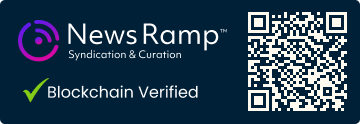
The world of futures trading presents aspiring traders with a critical decision: whether to pursue funded trader programs or dive into live trading with personal capital. This choice can significantly impact a trader’s career trajectory and financial outcomes.
Funded trader programs, offered by firms like Topstep, Apex Trader Funding, and Leeloo, provide an opportunity for traders to access substantial capital without risking their own funds. These programs typically involve a rigorous evaluation process in simulated environments before granting access to live funded accounts. For instance, Topstep’s Trading Combine platform allows traders to prove their skills in a practice setting. In the first seven months of 2023, slightly over 25% of participants passed Topstep’s evaluation, demonstrating their ability to manage risk and achieve profitability.
Apex Trader Funding caters to both novice and experienced traders, offering a multi-phase evaluation program that starts with simulated trading using real-time data. Successful candidates then progress to live trading with Apex-funded accounts. The platform has gained popularity, boasting tens of thousands of users across 150 countries.
Leeloo takes a unique approach by combining agricultural values with futures trading. Traders must purchase a practice account and meet specific profit targets over a set number of days before advancing to a funded Performance Account. This model emphasizes consistency and discipline in trading strategies.
Funded trader programs are particularly attractive to individuals who have enough capital to invest in an evaluation account but lack sufficient equity for substantial live trading. These programs offer the allure of trading with a firm’s capital while retaining a percentage of profits. However, they come with caveats, including fees based on skill level and the pressure to maintain consistent results.
On the other hand, live trading accounts offer full autonomy and profit potential but require traders to shoulder all risks and use their own capital. This option may be more suitable for experienced traders with sufficient funds and a proven track record.
For those seeking a middle ground, platforms like EdgeClear offer sophisticated simulated trading environments. The EdgeProX platform provides advanced charting capabilities and customization options, allowing traders to refine their strategies without risking real capital. This approach enables traders to test their skills in various market scenarios, gaining confidence before transitioning to live trading.
The choice between funded programs and live accounts ultimately depends on a trader’s experience, risk tolerance, and financial situation. Funded programs offer a pathway for traders with limited capital to access significant trading funds, but they come with stringent evaluation processes and ongoing performance expectations. Live accounts provide more freedom but require substantial personal capital and a higher tolerance for risk.
As the futures trading landscape continues to evolve, the importance of thorough preparation and risk management cannot be overstated. Whether opting for funded programs or live accounts, traders must focus on developing robust strategies, mastering risk control, and continuously honing their skills to succeed in the competitive world of futures trading.

This news story relied on a press release distributed by News Direct. Blockchain Registration, Verification & Enhancement provided by NewsRamp™. The source URL for this press release is Navigating Funded Trader Programs vs. Live Accounts: A Comprehensive Guide for Futures Traders.